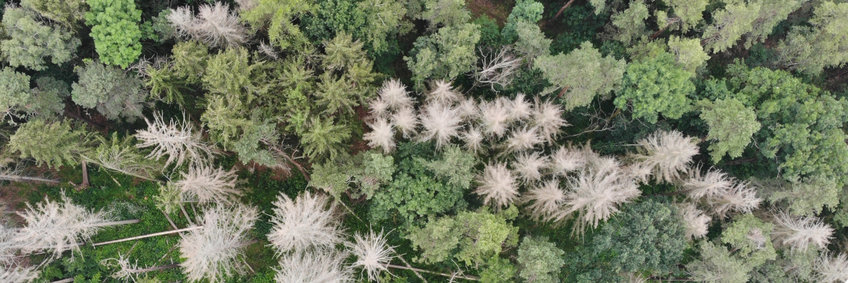
Wood anatomy and non-structural carbon dynamics
Trees store large quantities of non-structural carbon (soluble sugars, starch and lipids) in woody tissues (stem-wood, branches and coarse roots). Stored non-structural carbon (NSC) is used to fuel metabolism and growth at different time scales, from daily to inter annual. Changes in these NSC quantities reflect the imbalances between carbon sources (e.g. photosynthesis) and carbon demands (e.g. growth and respiration). Then understanding what drives changes in the stored NSC at different time scales will help us to unveil the mechanisms behind how trees build and use their reserves to survive life threatening conditions such as droughts, physical damage or pests.

The storage and use of NSC in woody tissues is constrained by their anatomy. For instance, the formation of living fibers would increase dramatically the capacity of trees to store starch and lipids (see the figure). This surplus of storage may give them a competitive advantage to survive stressful conditions that reduce photosynthetic activity, and therefore it may be associated with lower mortality rates. Nevertheless, little is known about the distribution of these wood anatomical traits in tropical forests and how those traits may constrain the use of NSC and keep trees alive for longer time when facing stressful conditions.
In this project we are interested in understanding how some wood traits such as the formation of living fibers and the proportion and size of parenchyma cells, fibers and vessels affect the storage and use of NSC in trees under starvation to help them survive.
Specifically, we are interested in understanding the distribution of storage strategies (fiber storing species vs parenchyma storing species) in tropical forest and how they are related to growth and morality rates. Also, we are interested in understanding how these strategies constraint the mobilization of NSC when trees face starvation and if either strategy represents an advantage to survive life threatening conditions.
